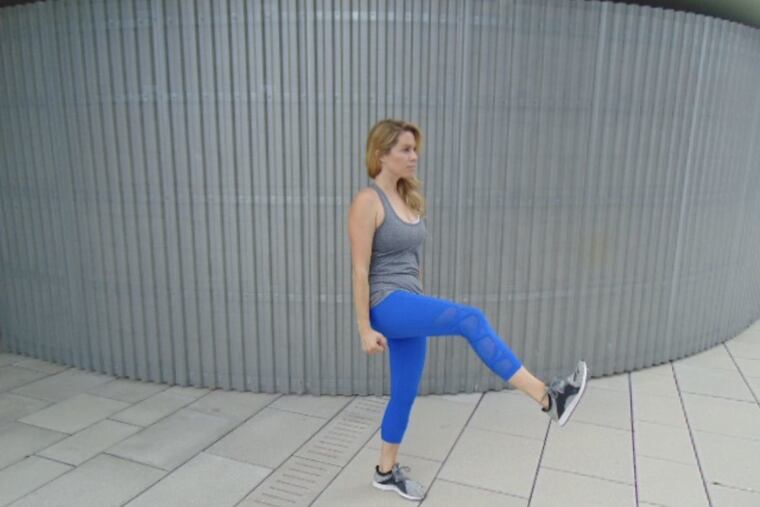This 20-minute HIIT workout is easy on your joints
This 20-minute HIIT workout is easy on your joints.

Do you want an intense fitness routine that won’t hurt your joints?
High-intensity interval training, also known as HIIT, has become a popular pick for those wanting to get fit fast. Routines require an all-out effort, brisk pace, with brief rest breaks between exercises.
These routines keep the muscles moving and heart rate elevated from start to finish, which is why they pack such a powerful punch at burning mega calories, molding major muscle groups, and revving up the metabolism to torch fat long after exercise is done. That’s something cardio alone won’t do.
A typical HIIT circuit is built around activities that make your heart rate soar, such as jumping. So as effective as these workouts are at getting (and keeping) you in shape, they aren’t compatible with everyone’s cardio, strength or balance abilities.
These high-impact exercises are particularly intimidating and dangerous for those with prior ankle, knee, hip, or lower-back injuries, as these repetitive joint jolts can quickly lead to new injuries.
If you’ve been wanting to try a HIIT routine but have avoided it for fear that it would place too much pressure on your body, this routine is for you. The following workout is very similar to a classic HIIT circuit, only without the high-impact exercises.
You will still need to maintain a somewhat speedy pace and keep rest breaks between exercises to two minutes or less. Most HIIT workouts allow for only 30- to 60-second breaks, so this gives more of a buffer to take a breather.
The sequence
Use a stopwatch to time 20 seconds per exercise in the following order and rest breaks as indicated. The more you practice these exercises, the better your endurance will become.
Exercise 1: Glute bridges.
Rest for 60 seconds.
Exercise 2: Dead bug.
Rest for 60 seconds.
Exercise 3: Plank shoulder taps.
Rest for two minutes or less, then repeat exercises one through three two more times (three in total)
Exercise 4: Leg pull-ins.
Rest for 60 seconds.
Exercise 5: Squats.
Rest for 60 seconds.
Exercise 6: Reverse lunge leg lifts.
When complete, rest for two minutes or less, then repeat exercises four through six two more times (three in total).
Exercise descriptions
Glute bridges
Begin on your back with both feet flat on the floor and your arms extended to the sides for support.
Push through your heels to lift the hips and squeeze the glutes. Hold for two counts, then slowly lower until you’re just hovering above the floor.
Dead bug
From your back, elevate the arms and legs. Engage the abs by drawing your belly button in toward the spine.
Keep your lower back flat against the floor as you steadily lower the right leg and left arm until they are hovering over the floor. Use your core strength to pull the arm and leg back up to the starting stance then practice on the opposite limbs.
Plank shoulder taps
From a plank position, with the shoulders aligned over the wrists, spine straight and gaze forward, lift your right hand to tap the left shoulder, then lower.
Now lift the left hand to touch the right shoulder. Continuing alternating. If easier, you can also complete this from a knee-based plank.
Leg pull-ins
Stand tall with the feet staggered and slightly wider than shoulder-width apart. The arms are extended overhead.
Simultaneously lower the arms and raise the right leg, crunching the abs. Avoid rolling the shoulders forward into a hunch. Release the arms and leg then practice with the left leg. Continue alternating.
Squats
With your weight in the heels, hinge back at the hips to lower into a squat.
Hold here for two counts, then push through the heels to stand and squeeze the glutes.
Reverse lunge leg lifts
Stand tall with the feet hip-width apart, shoulders over the hips and gaze forward. Take a step back with the right leg and lower into a lunge. The front knee should not extend beyond the toes while the back knee is under the hip. Keep all your weight in the front heel.
Push through the front left heel to stand and kick the right leg out in front of the body. Now practice on the opposite leg. Continue alternating.